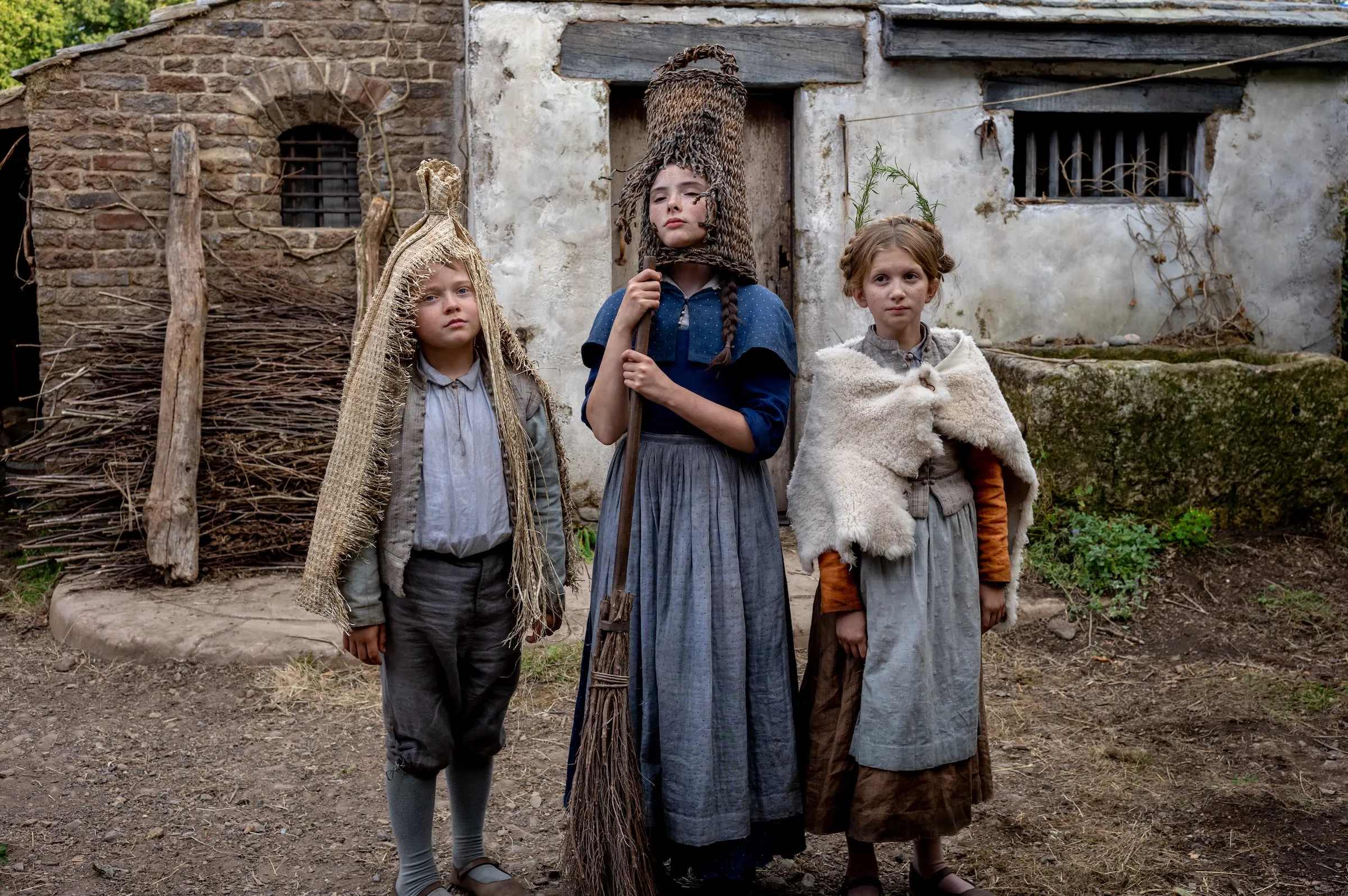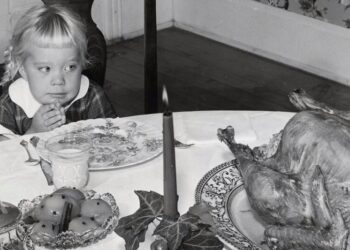Warning: This story contains spoilers for Hamnet.
Many scholars have attempted to read personal history into the writings of William Shakespeare. One work that has often intrigued them is The Tragedy of Hamlet (1603), the Bard’s story of an anguished Danish prince who seeks to avenge his father’s death. Their keen interest stems in part from the closeness of that prince’s name to that of the playwright’s only son, Hamnet, who tragically died before adolescence. But it also owes to the play’s echoes of the writer’s own life: a son going mad following the devastating death of a parent, perhaps a reversal of Shakespeare’s own plight.
[time-brightcove not-tgx=”true”]
Now the film Hamnet, Oscar winner Chloé Zhao’s adaptation of Maggie O’Farrell’s bestselling 2020 novel, is the latest effort to reconcile Shakespeare’s life with his art. It draws direct parallels between the playwright’s loss of his only male heir and the emotional force this death may have borne. And it suggests that the wordsmith channelled his torturous grief into writing his celebrated play Hamlet years later.
Here’s what to know about Hamnet, including where truth ends and fiction begins.
Hamnet reimagines history

Hamnet, which releases in limited theaters beginning on Nov. 26, takes creative liberties with Shakespeare’s marriage and family life. At its center is a story of two parents buckling under the weight of unfathomable loss. The film begins by reimagining how Shakespeare (Paul Mescal) and his wife Agnes (Jessie Buckley) fell in love, first meeting when the playwright was working as a Latin tutor in the same village she lived in.
As young adults, the pair experienced an intoxicating attraction, which soon led to marriage. But after the birth of their three children, their passionate trysts are eventually exchanged for lonely moments miles apart. The writer is shown to be an often absent parent, a man never identified in the book by name—only referred to as “the father”—who works in London while she holds the family together in Stratford. Agnes is both a seer and healer, preparing natural remedies for the townsfolk to help with ailments and sickness.
As was true for most villages in Elizabethan England, eventually the bubonic plague comes calling. The couple’s son Hamnet (Jacobi Jupe), desperate to help his beloved sister Judith (Olivia Lynes) who appears beyond help from the ravages of the disease, wishes aloud to trade places with her. Soon after, as Judith starts to recover, Hamnet tragically succumbs to the contagious disease.
His death proves devastating for the parents, as their frayed union begins to completely unravel. Hamnet eventually leads to a final climatic encounter at the Globe Theater, where Agnes, enraged at the idea that her husband is using their grief as fodder for fiction, arrives to witness the staging of her husband’s new work, The Tragedy of Hamlet. The film positions the play as the only way Shakespeare knew to articulate his grief, leveraging the story of a troubled prince—mourning his father and going mad in the process—for his own psychic battle. And Agnes, in turn, finds unexpected catharsis in seeing that story performed on stage.
Who was Agnes/Anne Hathaway?

The historical record about Shakespeare’s wife Anne (sometimes Ann) Hathaway is sparse, which has made her an enigmatic figure to study. Hamnet calls her by the name Agnes, a nod to how people’s names weren’t always fixed in Shakespeare’s days and could change slightly, which hers most likely did.
Anne married Shakespeare in 1582, when she was 26 and he was 18. Three children followed: Susanna (born in 1583) and twins Judith and Hamnet (born in 1585). In Shakespeare’s Wife, historian Germaine Greer parses over what little record survives to argue that Anne was likely literate and skilled in crafts and artisan work.
There are questions that hang over the marriage, however, including the fact that Shakespeare almost certainly left his children fatherless three years into it. Historian Stephen Greenblatt wonders if Shakespeare felt trapped by his nuptials and simply decided during fatherhood “not to live with his wife.” The fact that Shakespeare later bequeathed his “second-best bed” to Anne may be a clue: some say this as a sign that the marriage was long strained; others say that despite being “second-best,” Shakespeare was likely giving her the marital bed. Anne herself would outlive her husband by seven years, dying at 67.
Shakespeare’s sexuality has also intrigued many historians, a subject which Hamnet itself chooses to omit. Some have suggested that the Bard had romantic liaisons with men, in part implied by sonnets that are charged with homoerotic elements. The adoring, affectionate mentions of a “Fair Lord” in many poems is evidence to some that Shakespeare was bisexual. But given the dearth of archival material from Shakespeare—like diaries or letters—there is no durable proof that he was either.
The real Hamnet

Hamnet was Shakespeare’s only son, and he died under hazy circumstances at age 11. While Hamnet imagines that it was the bubonic plague that killed the young boy—the subtitle of O’Farrell’s book is “A Novel of the Plague”—there is no historical consensus.
What is known is that Hamnet was a fraternal twin. He and sister Judith were christened on Feb. 2, 1585, when Shakespeare was 21 and Anne was 29. Their names were chosen most likely in honor of the family’s neighbors, Hamnet and Judith Sadler. (That couple later named their firstborn son “William.”)
Others have wondered whether, because Hamnet was a twin, he was born with a physical impairment or even a compromised immune system. Greer speculates that Judith’s long life—dying at age 70—is a strong indicator that Anne may have experienced a compromised pregnancy with the twins. “Discordancy in twins is common,” she writes. “It would follow that as the weaker of the twins Hamnet could have been starved of oxygen at the time of birth.”
If his health is murky, Hamnet’s cause of death is even murkier. Many scholars have attempted to trace the cause: Greer eliminated the idea of malnutrition and put forward the hypothesis around a possible birth injury, while biographer Peter Ackroyd speculated on whether dysentery or typhus afflicted the young boy, as both diseases ravaged Stratford and had high mortality rates.
Others are more certain it was the plague: “An outbreak in Stratford in 1564, the year of Shakespeare’s birth, took the lives of around a fifth of the population, and the disease recurred throughout the century with nightmarish frequency,” writes Greenblatt. If it was the plague that took Hamnet, it was very likely a painful death, marked by weakness and buboes (swollen lymph nodes).
The boy’s funeral too is a contested part of the family saga. Hamnet was buried on Aug. 11, 1596, and whether or not his father was present for his death or funeral is uncertain. In Hamnet, Shakespeare is shown to be there only for the burial; his having been in London when the boy died drives the wedge even further between him and Agnes, who, in desperation, tried everything to save her sick children.
Others, like Greer and biographer James Shapiro, are certain Shakespeare wasn’t home when Hamnet died, perhaps even for the funeral too. The Bard was likely occupied in London and received word only days after Hamnet’s illness ravaged him. “[I]t would have taken a messenger from Stratford four or five days at least just to find Shakespeare,” Shapiro writes. More proof is that Shakespeare left no testimonial to read for Hamnet at the funeral. The only certainty is that those living in Stratford, including mother Anne, and sisters Judith and Susanna, were present as well as family friends Hamnet Sadler and Judith Sadler.
Was Hamnet’s death the inspiration for Hamlet?

Hamnet makes the case that Shakespeare did use his tragedy to plumb his parental grief. Perhaps this was owing to guilt and shame from his years apart from his young son, whom he rarely visited but did send money home for. Some aspects of fatherhood did influence the playwright, most especially the metaphor of twins, which he used to show characters confronting their other half in plays like Twelfth Night and The Comedy of Errors.
Some historians, including Greenblatt, see shades of emotional turmoil not in Hamlet but in Shakespeare’s output that immediately followed. For example, the grieving mother Constance of King John (1623)—a play likely written the year of Hamnet’s passing but published decades later—contemplates suicide after her son dies. “Grief fills the room up of my absent child,” she intones, a line perhaps conjured in honor of the son Shakespeare barely knew.
Conversely, other historians argue that because Shakespeare wrote some of his “sunniest comedies” after Hamnet’s death—like As You Like It and Much Ado About Nothing—he avoided wallowing in his emotions, escaping into levity and humor instead.
Male heirs and bloodlines were socially important at the time. Shakespeare’s will itself indicates that the Bard had a “strong interest” in passing his fortunes down to a male son, as Greenblatt says. But often during that era, one in three children didn’t make it to the age of 10, a reality only aggravated by the plague.
While the stories don’t entirely reflect the same plight, some scholars contend that the fabled story of Hamlet does carry the same emotional tenor of parental grief and guilt threading the two experiences together.
Was Shakespeare affected by the plague?

The plague itself did influence the playwright’s work and times, if often in subtle ways.
The disease was deeply contagious and caused horrific suffering to those afflicted, so public assemblies—like theater shows and bear-baiting fights—were frequently canceled to help slow the spread. (Church services, though, were never canceled.) Historian Greenblatt determined that London’s theaters only opened for nine months between 1606 to 1610 owing to the plague. During this time, Shakespeare likely wrote at home, or perhaps traveled the provinces with actors looking to escape the quarantine measures of the capital.
If anything, the plague was often leveraged as a metaphor in Shakespeare’s writing to represent abjectness, like Mercutio famously declares in Romeo & Juliet: “A plague on both your houses.” Public health restrictions are also shown to affect characters, like Friar John in the same play, who is forced to quarantine while attempting to deliver Friar Laurence’s letter to Romeo in Verona.
What’s perhaps most critical around the plague is its embodiment of feelings of destruction and ruination. So many major plays, like Macbeth and King Lear, are littered with disease metaphors, underscoring the physical destruction of the body (King Lear exclaims about “a plague sore” and “corrupted blood”) and its toll on the mind too.
The plague can ravage from the inside too, with seemingly no cure possible—perhaps not unlike Shakespeare’s own experience of grief.
A selection of photos featured in this story are featured in Even as a Shadow, Even as a Dream, by Chloé Zhao, created in collaboration with actor Jessie Buckley and photographer Agata Grzybowska, on sale now from MACK.
The post True Story Behind Hamnet, Shakespeare’s Family, and the Origins of Hamlet appeared first on TIME.




